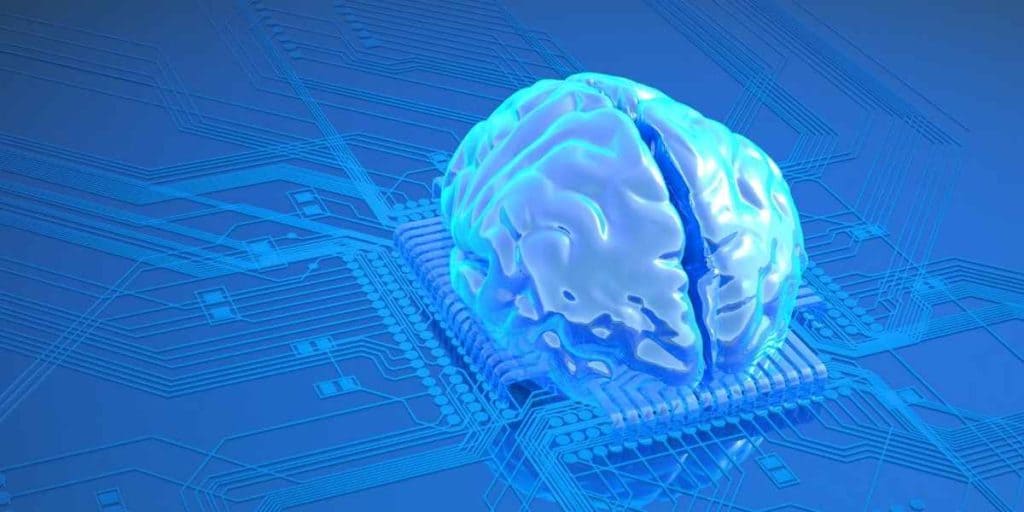Machine learning has intense computational requirements, and your system needs to be able to handle it. Since GPU technology is advancing at a remarkable rate, GPUs have become very common for machine learning purposes. But is it necessary to buy a high-end graphics card for your machine learning requirements?
A good GPU is indispensable for machine learning. Training models is a hardware intensive task, and a decent GPU will make sure the computation of neural networks goes smoothly. Compared to CPUs, GPUs are way better at handling machine learning tasks, thanks to their several thousand cores.
Although a graphics card is necessary as you progress, you can learn everything about machine learning even on a low-end laptop. Read on to learn more about the need for a GPU, why the process is hardware intensive, and how to pick the best GPU for your needs.
Important Sidenote: We interviewed numerous data science professionals (data scientists, hiring managers, recruiters – you name it) and identified 6 proven steps to follow for becoming a data scientist. Read my article: ‘6 Proven Steps To Becoming a Data Scientist [Complete Guide] for in-depth findings and recommendations! – This is perhaps the most comprehensive article on the subject you will find on the internet!
Table of Contents
Do You Need a Graphics Card for Machine Learning?
Machine learning (ML) teaches the system to learn and improve from past experience without being programmed explicitly. In simpler words, it’s the science of getting machines to learn and act like human beings.

Machine learning is essentially a mathematical and probabilistic model that requires a lot of computation. This model is created in four steps:
- Preprocessing input data.
- Training the machine learning model.
- Storing the trained machine learning model.
- Deploying the model.
Among these steps, training the machine learning model is the most computationally intensive one. It requires a large amount of data. The system performs various matrix multiplications to build this intensive part of neural networks.
Machine learning problems involve matrix operations, and the neural networks can have millions of parameters to train. We can make this process smoother and faster by performing all operations simultaneously, instead of doing them one after the other.
This is where a graphics card can help us as it can effortlessly parallelize these tasks. A GPU is designed to compute with maximum efficiency using its several thousand cores. It is excellent at processing similar parallel operations on multiple sets of data.
Remember that you only need a GPU when you’re running complex machine learning on massive datasets. If you’ve just started studying machine learning, it’ll be some time before GPU bottlenecks your learning. You can study all about machine learning, deep learning, and artificial intelligence on a budget laptop with no graphics card. You need a high-end system only when you want to practice these models.
CPU vs. GPU for Machine Learning
As we’ve discussed, you can learn machine learning concepts even on a laptop without a GPU. In that case, all operations would be performed by your CPU.
Using a CPU to perform ML tasks is fine for studying. But as your datasets get larger, you’ll need a good-quality GPU to support your operations. Why, you ask? Let’s understand the difference between the workings of CPU and GPU with the help of an analogy.
Say you want to deliver pizzas, and you have 10 super-fast bikes. Each motorcycle can deliver one order at a time, which means you can deliver up to 10 orders at once. But if you have more than 10 orders, someone will have to wait for one of the motorcycles to deliver a pizza first. And what if you have 500 orders? Even though your bikes are fast, it’ll take a long time to deliver all the pizzas.
This is how CPUs work: they offer rapid and focused sequential processing. You may adapt it to deliver more than just one pizza at a time. Still, operations will always be sequential with CPU—deliver one order, then the next, etc.
On the contrary, a GPU is like having 1000 average speed motorcycles. Even though they’re slower than your sportbikes, you’ll be able to deliver 500 orders much faster. This is because you can deliver all of them at once. The ability to parallelly deliver many pizzas makes up for the slower speed.
To conclude, CPUs are faster than GPUs, and they can also perform several tasks at once. However, GPUs have way more cores, which offsets the faster speed of CPUs. These thousands of cores allow GPUs to process many operations simultaneously and offer better performance than a CPU. And that’s why they are better suited for things like virtual currency mining, deep learning, or machine learning.
What to Look for in a GPU for Machine Learning?
Machine learning involves various tasks such as training a model to classify objects and processing large amounts of data. These tasks can be very hardware intensive, so you must choose a GPU that meets your hardware requirements. Here are three things you need to consider before buying a graphics card for machine learning:
- Memory bandwidth: It determines the ability of a GPU to deal with large amounts of data. The more memory bandwidth in your GPU, the better and smoother it will perform. It’s the most crucial performance metric, so look for a GPU with high memory bandwidth.
- Video RAM size: It measures how much data your system can store and handle at one time. If you’ll be working with categorical data and Natural Language Processing (NLP), the amount of VRAM is not so important. However, higher VRAM is crucial for Computer Vision models.
- Processing power: It is calculated by multiplying the number of cores inside the GPU and each core’s clock speed. As the name suggests, processing power indicates how fast your GPU can process data. Look for more cores with higher clock speeds.

Nvidia vs. AMD GPU for Machine Learning?
When it comes to machine learning, Nvidia GPUs are more optimized. They have a profoundly entrenched CUDA software development kit (SDK) that supports all major machine learning frameworks. Nvidia’s programming tools and libraries have also increased the usability of their GPUs.
An alternative to CUDA is the OpenCL SDK, which works with AMD GPUs. But it doesn’t support the major ML frameworks out of the box. Hopefully, OpenCL will support ML frameworks soon, and AMD will become an attractive choice for machine learning GPUs. They have some excellent inexpensive cards in the market.
For now, if you want to practice machine learning without any major problems, Nvidia GPUs are the way to go.
Best GPUs for Machine Learning in 2020
If you’re running light tasks such as simple machine learning models, I recommend an entry-level graphics card like 1050 Ti. Here’s a link to EVGA GeForce GTX 1050 Ti on Amazon.
For handling more complex tasks, you should opt for a high-end GPU like Nvidia RTX 2080 Ti. Or you can use a cloud service that provides robust GPU functionalities like Amazon AWS or Google GCP.
Lastly, suppose you’re working on highly demanding tasks like multiple simultaneous experiments. In that case, you will need to get a computer system designed for multi-GPU computing. This is because in such scenarios one GPU will not be enough for you, no matter how high end it is.
Author’s Recommendations: Top Data Science Resources To Consider
Before concluding this article, I wanted to share few top data science resources that I have personally vetted for you. I am confident that you can greatly benefit in your data science journey by considering one or more of these resources.
- DataCamp: If you are a beginner focused towards building the foundational skills in data science, there is no better platform than DataCamp. Under one membership umbrella, DataCamp gives you access to 335+ data science courses. There is absolutely no other platform that comes anywhere close to this. Hence, if building foundational data science skills is your goal: Click Here to Sign Up For DataCamp Today!
- IBM Data Science Professional Certificate: If you are looking for a data science credential that has strong industry recognition but does not involve too heavy of an effort: Click Here To Enroll Into The IBM Data Science Professional Certificate Program Today! (To learn more: Check out my full review of this certificate program here)
- MITx MicroMasters Program in Data Science: If you are at a more advanced stage in your data science journey and looking to take your skills to the next level, there is no Non-Degree program better than MIT MicroMasters. Click Here To Enroll Into The MIT MicroMasters Program Today! (To learn more: Check out my full review of the MIT MicroMasters program here)
- Roadmap To Becoming a Data Scientist: If you have decided to become a data science professional but not fully sure how to get started: read my article – 6 Proven Ways To Becoming a Data Scientist. In this article, I share my findings from interviewing 100+ data science professionals at top companies (including – Google, Meta, Amazon, etc.) and give you a full roadmap to becoming a data scientist.
Conclusion
Machine learning is a growing field, and more people are looking for a career as a machine learning engineer. A good-quality GPU is required if you want to practice it on large datasets. If you only want to study it, you can do so without a graphics card as your CPU can handle small ML tasks.
It’s essential to purchase a GPU that will meet the hardware requirements of your machine learning programs. When looking for a GPU, its memory bandwidth, processing power, and VRAM are crucial considerations. To get you started, I’ve recommended a couple of decent GPUs for different levels of intensity.
BEFORE YOU GO: Don’t forget to check out my latest article – 6 Proven Steps To Becoming a Data Scientist [Complete Guide]. We interviewed numerous data science professionals (data scientists, hiring managers, recruiters – you name it) and created this comprehensive guide to help you land that perfect data science job.
Affiliate Disclosure: We participate in several affiliate programs and may be compensated if you make a purchase using our referral link, at no additional cost to you. You can, however, trust the integrity of our recommendation. Affiliate programs exist even for products that we are not recommending. We only choose to recommend you the products that we actually believe in.
Recent Posts
Data science has been a buzzword in recent years, and with the rapid advancements in artificial intelligence (AI) technologies, many wonder if data science as a field will be replaced by AI. As you...
In the world of technology, there's always something new and exciting grabbing our attention. Data science and analytics, in particular, have exploded onto the scene, with many professionals flocking...
